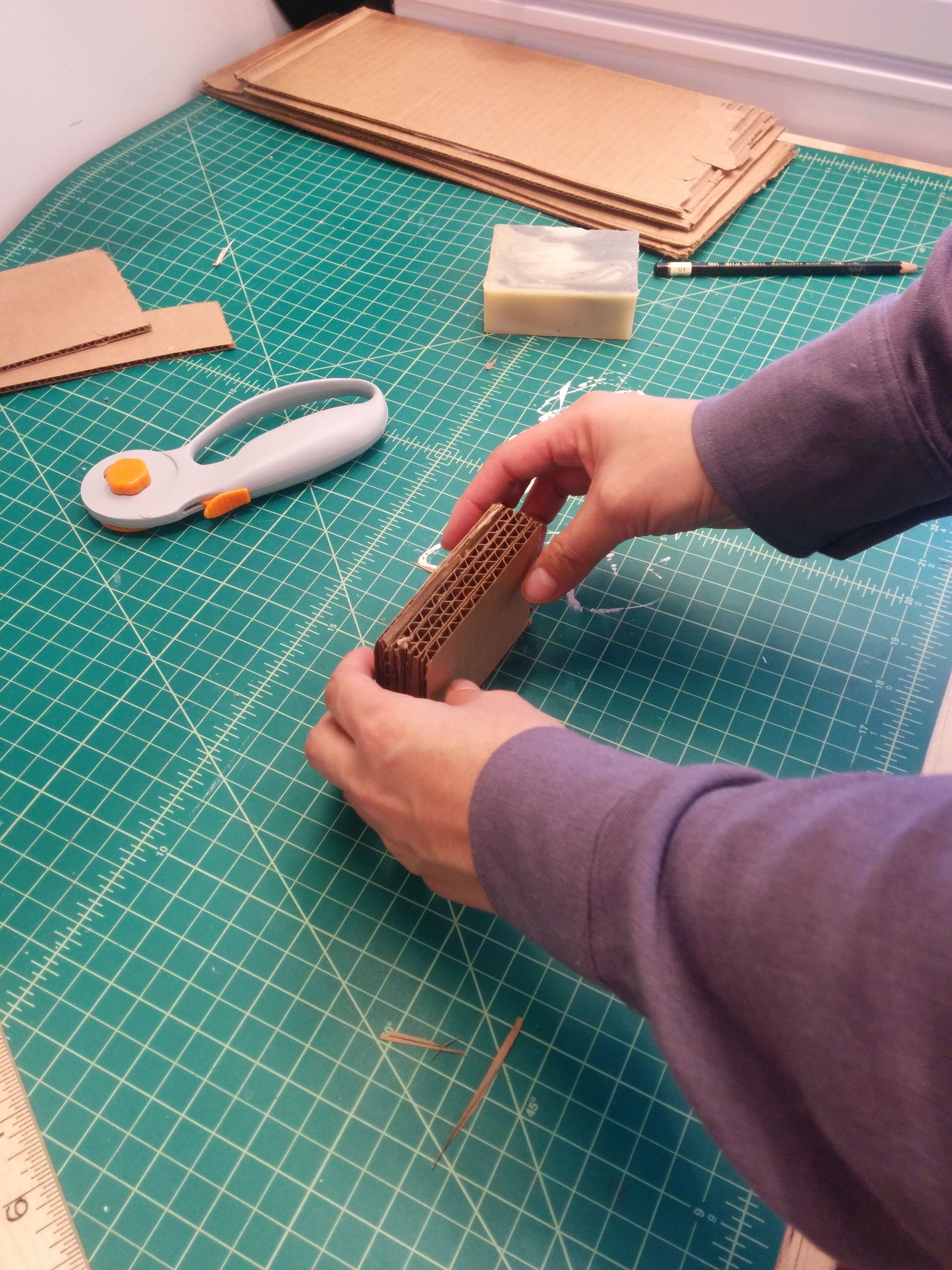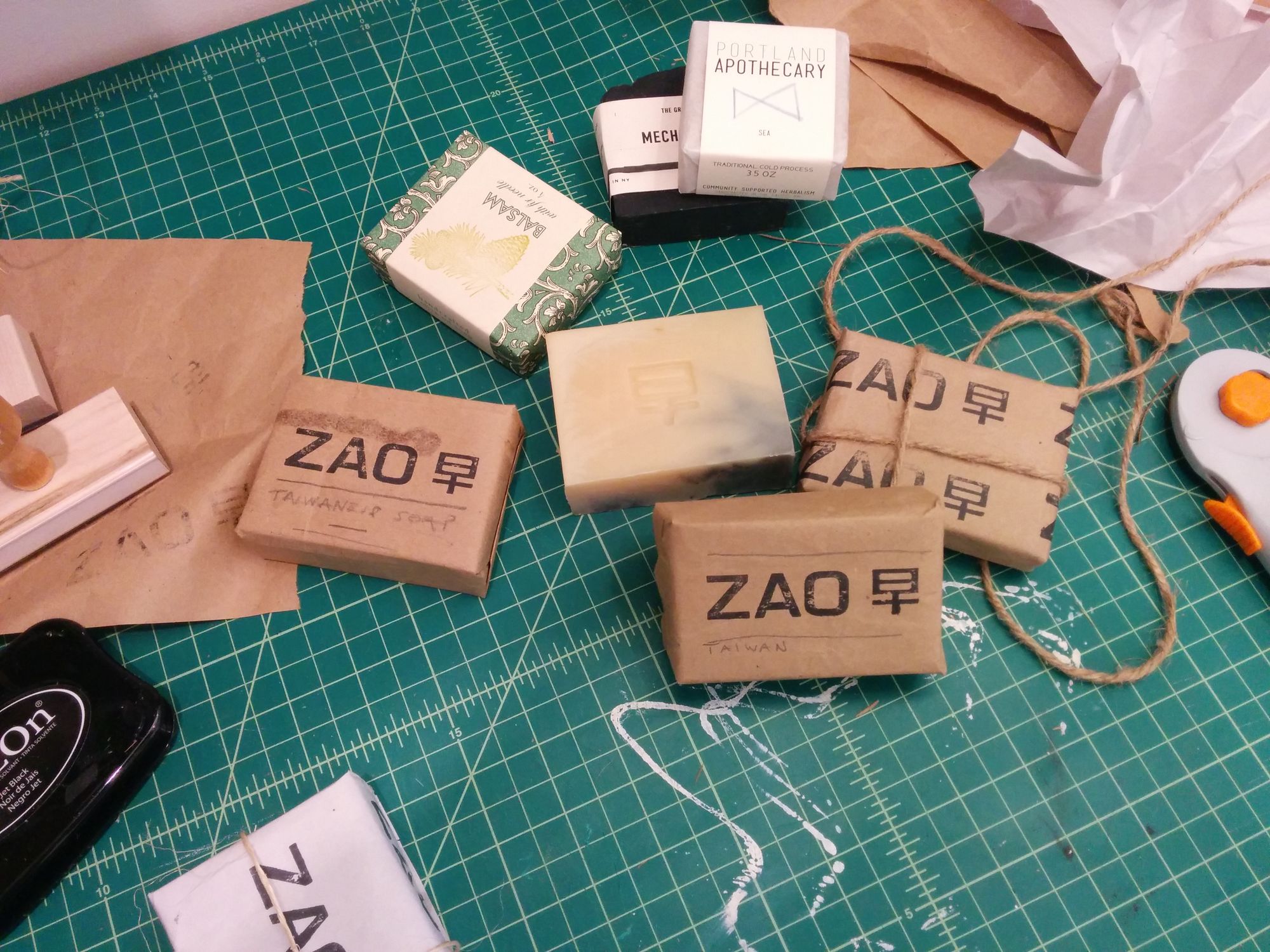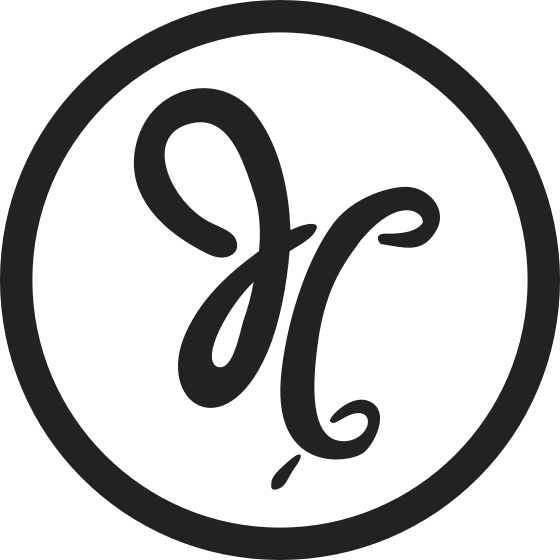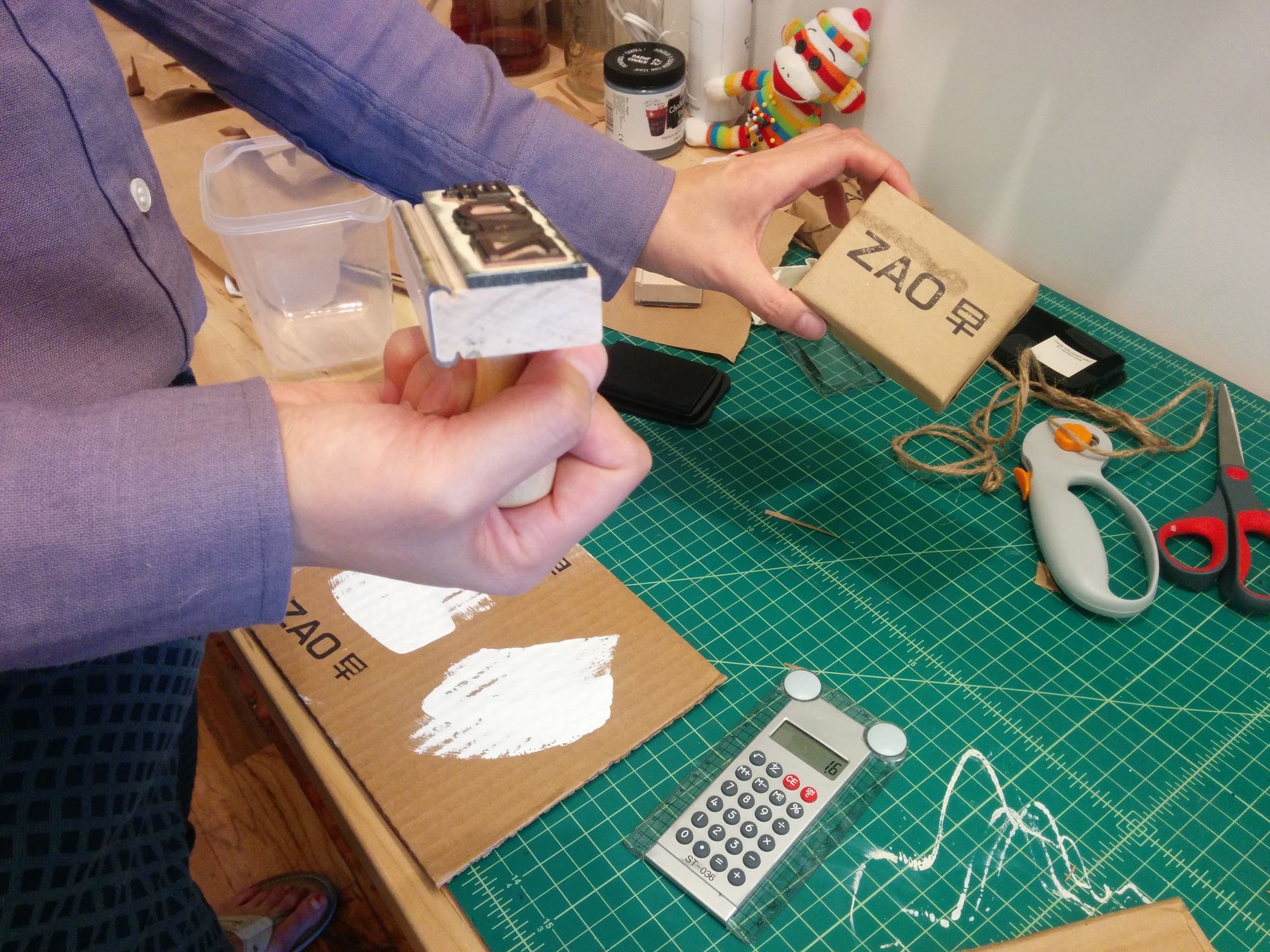Last weekend, Becca and I set out to make some progress on the branding for her new soap company, Zao (‘morning’ in Mandarin). We had some fundamental questions to answer about her bar soaps:
Having recently read an excellent article on Debra Sterling's GoldieBlox, which emphasized rapid prototyping, I suggested we put together some prototypes. So we collected glue and leftover cardboard, bought a variety of soaps from soapmakers that we like, and were ready to roll.
To start, we cut pieces of cardboard to the sizes of our sample soaps. We then glued those pieces together to create

thickness, and finally wrapped those stacks of cardboard with kraft paper to make holding the prototypes more convincing. I’m not sure how much anybody else has thought about the form factor of soap, but since it’s one of the very few factors that differentiates you from other soaps, I feel that it’s worthy of serious thought.
After constructing prototypes of some of our sample soaps, we started to build new prototypes that refined those shapes into something that we felt suited both of our hands - not easy, considering our hands are very different sizes.
Using a cheap, plentiful, and flexible material like cardboard made it painless to figure out the shape of each bar. In under 3 hours, we created 5 sample bars, decided on a size, and generated some great ideas about what the final packaging might look like. As you can see, we still have a lot to do, but this put us on the right track - free of charge, super fast, and it was a lot of fun.
Rapid prototyping can be applied to anything from software to children’s toys to designing machinery. I’m so thankful that I gave it a shot, and am really looking forward to using it again. Next on my list is to build a prototype for the soap cutter that I’ve designed. More on that later!


